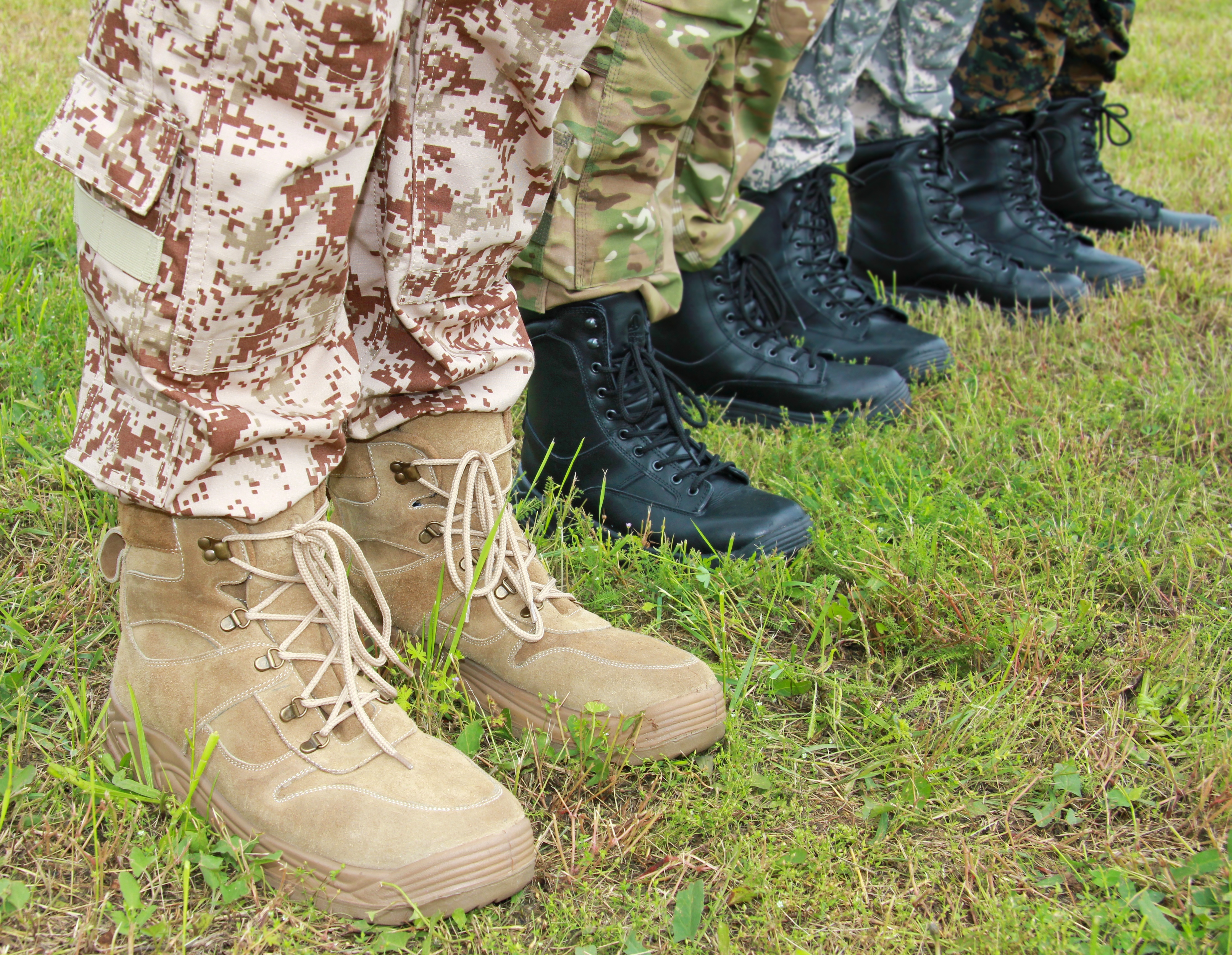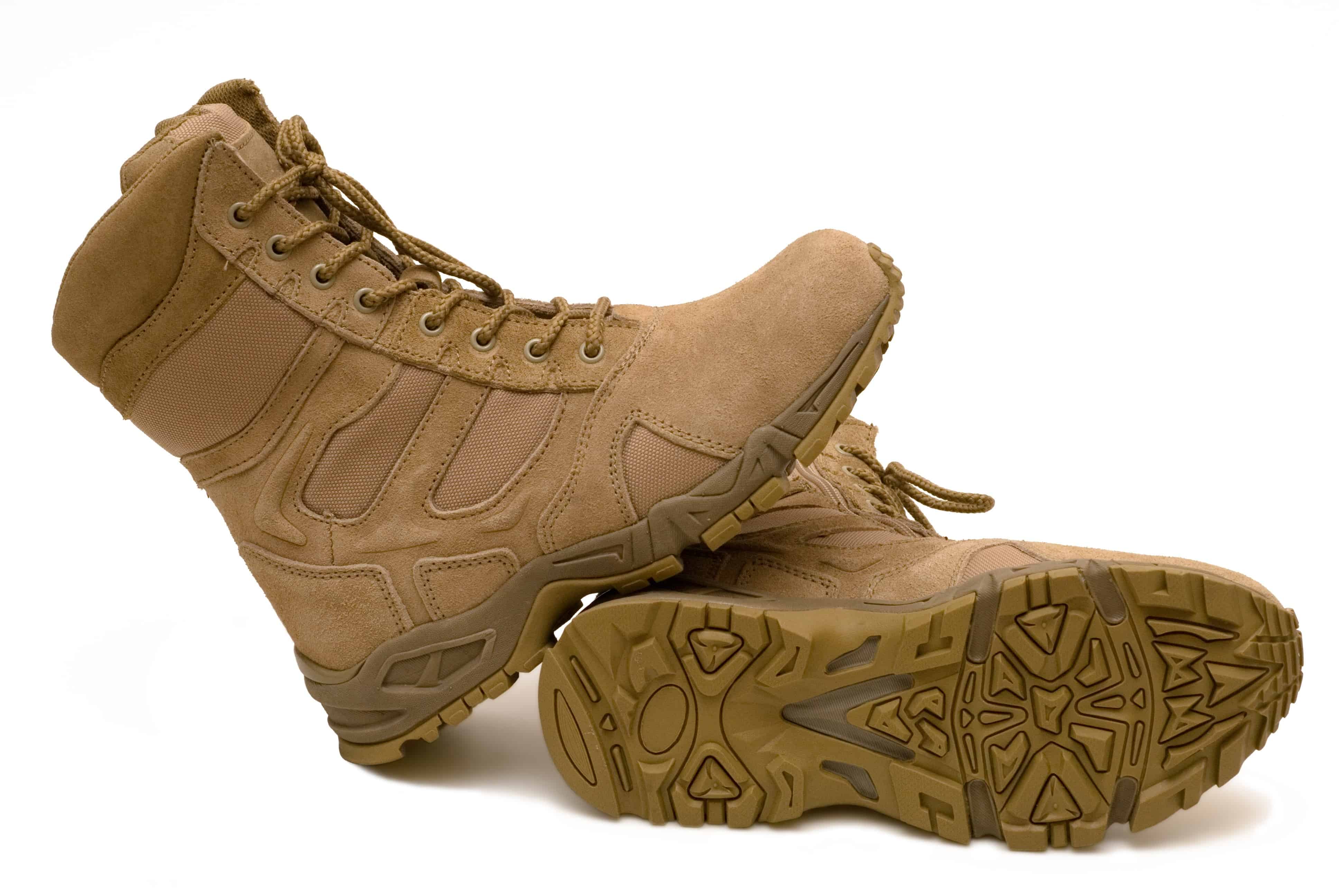
When you wear military boots, you want them to be comfortable and perfectly sized for your feet. Because of this, you may have questions about military boot sizing and what you should look out for as you try them on.
Military boot sizes work like civilian shoe sizes, so the shoe size that you normally wear can transition easily to military boot standards. That being said, be sure to read company suggestions or customer reviews to see if you should size up or down for certain brands.
Let’s see how military boots work to help you find the perfect size.
Military Boot Sizes
Overall, military boot sizes match regular shoe sizes. What you typically wear in men’s or women’s shoes is what will suit you best for your military boots, so they won’t be a big leap away from what you expect.
Not all military boot brands are made equally, though. Because of the wide array of boot distributors, sizing varies. Even if you owned a prior set of military boots in a certain size, it doesn’t mean that the next pair you get will fit you the same way due to the differing brands.
Sizing issues are a common theme for military boots, so be aware as you search. You may have to go up or down anywhere from half size to a whole size to find the right fit.
Watch out for these popular military boot brands that have different sizes from regular civilian shoes.
- Rothco: Runs a half to a whole size larger
- Cocoran: Runs half size larger
- Belleville: Runs a half to a whole size larger
- Altama: Runs normal to a half size larger
As you try on your military boots to determine if they’re a good size, consider the following details:
| Standing | See how your boots fit while standing and walking. If possible, walk with them on an incline or decline to see how your feet move within them. |
| Wiggle Room | Your toes should be able to wiggle at the front of the boot. To test if you have enough room, bring your toes to the tip of the boot and see if you can place a finger between your heel and the shoe. |
| Heels | Your heels should not shift much in the military boot. If they do, this will cause blistering. Likewise, a heel shouldn’t feel too snug. |
| Time | Try on the boots during the afternoon or evening, which is when your feet are likely the most swelled. This helps you gauge whether your boots will accommodate your feet or not during a long day. |
| Socks | Be sure that your boots not only fit your feet but whatever socks you will wear with them. Thicker or thinner socks can determine what boot size you actually need comparing to other shoes. |
Military Boot Widths

Military boots have additional sizing information when it comes to the boot width. Because foot sizes differentiate so much, it’s helpful to have other styles for a pair of military boots. That way you can get as close as possible to finding the right boots that will last you through difficult terrain, weather, and time.
Here’s a chart that will help you know what each width size means.
| “B” or “N” | Narrow boot width |
| “R” or “D” | Medium boot width, or regular |
| “W”, “EW”, or “EE” | Wide boot width |
| “EEEE” or “XW” | Extra-wide boot width |
Of course, most people would choose the regular boot width. However, if you feel that you need a narrow, wide, or extra-wide boot for your feet, then consider trying out a pair to see how they work for you.
Military boots shouldn’t be just “okay” for your feet–they need to be the best for your feet. Otherwise, you may have achy soles, cramped toes, and blistered heels. Foot problems will hinder your ability to travel and dampen your mood, which is why military boot wearers put so much deliberation into choosing the right pair for them.
Whatever your boot width is, they should fit securely to the sides of your feet. Not too loose, not too snug. If this is hard to feel at first, try walking in them and wiggling your toes. You should have some room, but not to the point where your feet roam around on the inside whenever you step.
Wearing military boots with the wrong width not only does damage to your feet, but your feet can strain the boots and decrease their longevity.
The constant pressure on the seams will eventually detach the sole from the rest of the boot. It may also fray certain types of boots because of what little give there is from the sides of your feet whenever the boots scrape against hard surfaces, such as rocks.
You want your boots to last, so finding a pair with the right width will ultimately benefit you and save you from spending money on another pair.
Military Boot Conditions
Other aspects of military boots and any additional apparel you wear with them may factor in before you choose which pair is the right size for your feet.
Boots that are lined with Gore-Tex or Thinsulate are likely to fit more snugly than boots that aren’t lined with them. Gore-Tex is a moisture-wicking fabric, and Thinsulate is a fabric that keeps warmth in. Should you need boots with one or both materials in them, you may need to size up.
As mentioned earlier, socks and their thickness are a major factor in deciding boot size. Compared to regular or sports socks, boot socks go hand-in-hand (or, rather, foot-in-foot) with military boots because of their sturdy make, thick toe and heel reinforcements, and moisture-wicking, breathable material.
If you try out a pair of boots, be sure to put them on with whatever socks you’ll use with them as well. Boot socks vary in thickness and quality due to their brand and prominent features, so one brand may fit differently than another. If you change socks later down the road, don’t be too surprised if your boots suddenly fit more snugly than they did before.
Check out these highly-rated boot socks from Darn Tough. Originally hiking socks, their support and protection make them great matches for anyone in the military. Their lifetime guarantee is no joke–these socks are a sturdy match for sturdy boots.
Military boots have that signature high boot style to protect ankles and calves from injuries, whether it’s internal or external. Although this article focuses on the foot area of the boots, it’s also important to consider how well the upper part fits you since it’s a major feature. Take note of:
- The shape of the upper part
- The style of the lacing
- The comfort of the boot’s tongue
- The top edge where chafing may occur
These factors can make or break a pair of military boots. Some boots are known to have uncomfortable tongues or unforgiving rigidity of the upper part. Boot sizing may help or hurt this aspect, so be sure to find not only what works for your feet, but your ankles and calves as well.
Another overlooked factor when you test out military boots is whatever insole or insert you like to use for your feet. Their addition to the boots themselves can change how much space is in them. Certain military boots can be tough on the soles, especially after a long day or for someone with flat feet or who experiences plantar fasciitis, so insoles and inserts are a must.
Overall, if your boots are uncomfortable from the very beginning, then it’s not likely to get any better given time. Be aware of how your feet feel in the boots on various surfaces before you stick to them. There’s a difference between breaking in a pair and just not being the right fit.
Men’s And Women’s Military Boots

It’s a small annoyance that men’s and women’s shoe sizes don’t match up, and the same can be said for military boots. If you’re a woman in the military and want to buy a pair of boots designed for men, here’s a size conversion chart.
| Women | Men |
| 6 | 4.5 |
| 6.5 | 5 |
| 7 | 5.5 |
| 7.5 | 6 |
| 8 | 6.5 |
| 8.5 | 7 |
| 9 | 7.5 |
| 9.5 | 8 |
For converting shoe sizes not listed on the chart, whether from men’s to women’s or women’s to men’s, you either go up a size-and-a-half or down.
It’s good to note that men’s and women’s military boots are also designed to suit the general foot shape of each sex. Men tend to have longer, broader feet than women do. Women tend to have narrower heels and taller arches than men. However, this does not mean that it’s a perfect strategy when it comes to the design.
In any case, military boots aren’t strictly scaled up or down.
But because every foot is different, you should see how well military boots designed for the opposite sex fit you. Unlike other kinds of shoes, such as running shoes, hiking boots, and sandals, military boots, fortunately, come with a unisex design to meet uniform standards, so you don’t have to sift through masculine and feminine styles.